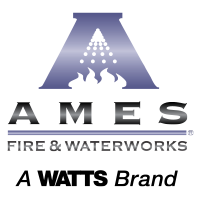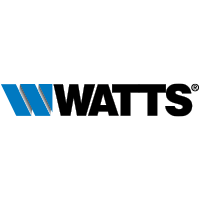Backflow
Terminology
A Glossary of Common Expressions
Denver Water: Formed by Denver voters in 1918, Denver Water provides potable (drinking) water to about 1.5 million residents in the City of Denver proper, as well as many of the surrounding communities in the Denver metro area. Denver Backflow Specialists provides service to a 15-mile radius surrounding its Denver location, meaning it primarily provides service to Denver Water customers.
Potable Water: Potable water simply means that it is water that is safe to drink, which comes from the Latin word potare, meaning “to drink.” While this could include untreated water, and does in much of the world, in terms of backflow prevention it means water that is filtered and treated by a water provider – primarily municipalities, such as Denver Water.
Cross Connections: A cross connection is a point in a plumbing system where the potable water supply is connected to a non-potable source. In the most simple of cases, this occurs in home with irrigation systems that can be infiltrated by pesticides, herbicides and animal waste. In commercial and industrial uses, there can be multiple cross connections as the potable water supply can be connected to fire suppression systems, cleaning facilities and a host of other uses.
With the passage of the Safe Drinking Act by the U.S. Congress in 1974, the law required that all cross connections be eliminated or protected by backflow prevention devices. Pursuant to Colorado law, Denver Water is now surveying all non-single-family water that will subject to annual backflow prevention inspections. These include all commercial, industrial, irrigation and fire line services (including multi-family residential), most of which now require annual backflow inspections. Single-family homes will also soon be included in annual inspection requirement.
Backflow Pressure: Backflow pressure is common in many commercial and industrial uses, such as fire-prevention sprinkler systems. The water contained in the sprinkler system is above in the incoming water so that water can flow back into the community drinking water supply if the backflow preventer malfunctions.
Backflow Siphonage: Backflow siphonage does not depend on the vertical placement of the cross connection and can occur in single-family homes with automated irrigation, which the connection is intentionally set above the irrigation lines. Backflow siphonage can occur in many instances when the pressure from the potable water supply is reduced. For instance when the water is turned off for plumbing repairs, it creates a vacuum from which the water from the irrigation system can be literally sucked back into the homes drinking water if the backflow preventer malfunctions.
Pressure Vacuum Breaker: A Pressure Vacuum Breaker or PVB is the most common backflow preventer used in single-family home irrigation, as it is usually less expensive and does not protect against backflow pressure. The PVB is a mechanical backflow preventer that consists of an independently acting, spring-loaded check valve and an independently acting, spring-loaded, air inlet valve on the discharge side of the check valve. It includes shutoff valves at each end of the assembly and is equipped with test cocks. A PVB is only effective against backsiphonage, but can be also used to protect against health hazard and non-health hazard backsiphonage conditions in industrial plants, cooling towers, laboratories, laundromats, swimming pools and lawn sprinkler systems.
RPA Backflow Preventer: A Reduced Pressure Principle Assembly (RPA) is a mechanical backflow preventer that consists of two independently acting, spring-loaded check valves with mechanically independent, hydraulically-operated, spring-loaded pressure differential relief valves. It includes shutoff valves at each end of the assembly and is equipped with test cocks. An RPA is effective against both backpressure backflow and backsiphonage. RPAs are used to protect against contamination in water systems such as to irrigation systems, boiler feeds, water lines and other installations requiring the highest level of mechanical protection. RPAs must be installed above ground and should have a minimum clearance of 12 inches from the bottom of the relief valve. When installing, allowances should be made for good access to the device for repairs and testing.
Dual Check Backflow Preventer: A Dual Check Backflow Preventer or DCVA is a mechanical backflow preventer that consists of two independently acting, spring-loaded check valves. It includes shutoff valves at each end of the assembly and is equipped with test cocks. A DCVA is effective against backpressure backflow and backsiphonage but should be used to isolate only non-health hazards. Double check assemblies are typically used to prevent backflow of pollutants that are objectionable but not toxic. These can be installed under continuous pressure service and may be subjected to backpressure. Double checks can be used on sprinkler irrigation systems and fire protection systems as well as other systems requiring protection.
Pressure Vacuum Breaker: A Pressure Vacuum Breaker or PVB is a mechanical backflow preventer that consists of an independently acting, spring-loaded check valve and an independently acting, spring-loaded, air inlet valve on the discharge side of the check valve. It includes shutoff valves at each end of the assembly and is equipped with test cocks. A PVB is only effective against backsiphonage and can be used to protect against health hazard and non-health hazard backsiphonage conditions in industrial plants, cooling towers, laboratories, laundromats, swimming pools and lawn sprinkler systems.
Vertical Backflow Preventer: A Vertical Backflow Preventer or VBP is a mechanical backflow preventer that consists of two independently acting, spring-loaded check valves. It includes shutoff valves at each end of the assembly and is equipped with test cocks. A VBP is effective against backpressure backflow and backsiphonage. VBP’s are used to protect against contamination in water systems such as to irrigation systems, boiler feeds, water lines and other installations requiring the highest level of mechanical protection. VBPs must be installed above ground and should have a minimum clearance of 12 inches from the bottom of the relief valve. When installing, allowances should be made for good access to the device for repairs and testing.
Denver Backflow Specialists provides support for all legal backflow preventers. We carry common parts for most all brands of preventers, including Watts, Febco, Wilkins, Ames and many other backflow device brands.



